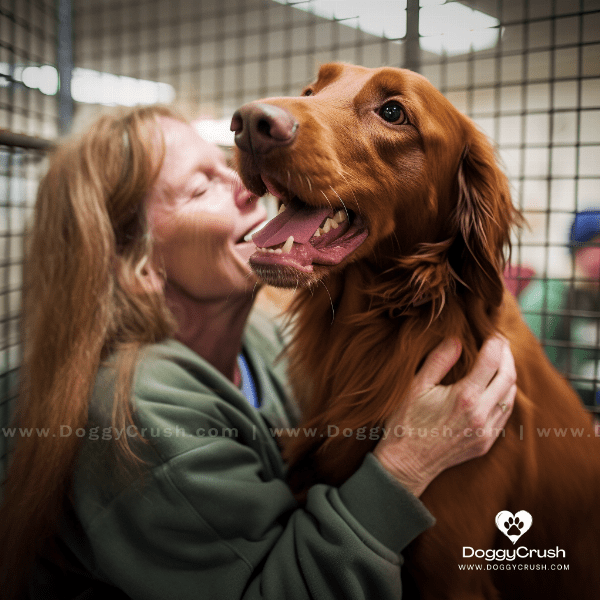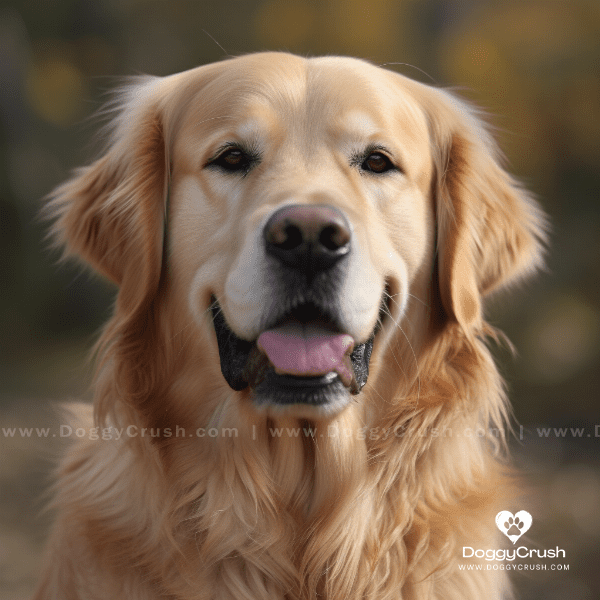Table of Contents
- History and Origin of the Irish Setter
- Physical Characteristics and Temperament
- Grooming and Coat Care for Irish Setters
- Health Issues Commonly Found in Irish Setters
- Exercise and Training Requirements for Irish Setters
- Feeding and Nutrition Tips for Irish Setters
- Living with an Irish Setter: What to Expect
- Choosing an Irish Setter Puppy: Tips and Considerations
- Irish Setter Rescue: How to Adopt a Dog in Need
History and Origin of the Irish Setter
The history of the Irish Setter can be traced back to the 18th century in Ireland, where they were originally bred as gun dogs for hunting game birds. The breed is believed to have been developed by crossing the English Setter, Irish Water Spaniel, and other breeds. In the early days, the Irish Setter was predominantly red and white in color, but over time, breeders focused on developing the solid red coat that is now a hallmark of the breed.
Irish Setters in Ireland
Irish Setters were highly valued in Ireland for their hunting abilities, and were often used to hunt game birds such as pheasant, quail, and partridge. The dogs were trained to locate and point out the birds to their owners, who would then shoot them down. Their keen sense of smell, excellent eyesight, and ability to work tirelessly made them highly sought after by hunters.
Irish Setters in the United States
The Irish Setter was first introduced to the United States in the early 19th century, but it wasn’t until the late 1800s that the breed gained popularity in America. The first Irish Setter club in the United States was formed in 1882, and the breed was officially recognized by the American Kennel Club in 1878.
Evolution of the Breed
Over time, the Irish Setter has evolved from a working dog to a show dog. Breeders have focused on developing the breed’s physical appearance and temperament to meet the standards set by dog shows. Despite these changes, however, the Irish Setter has maintained its hunting instincts and remains a popular breed for hunting enthusiasts.
Conclusion
In conclusion, the Irish Setter is a beloved breed with a rich history and heritage. Their role as a hunting dog has evolved into a loving companion, and they are highly sought after for their friendly disposition and loyalty. Understanding the history and origin of the Irish Setter can help dog owners appreciate the unique qualities of this special breed.

Physical Characteristics and Temperament
The Irish Setter is a medium to large-sized dog with a distinctive red coat and a long, lean build. Here are some of the physical characteristics and temperament traits that define the breed:
Physical Characteristics
- Coat: The Irish Setter’s coat is long, silky, and typically solid red in color. The coat requires regular grooming to prevent matting and tangling.
- Height: Male Irish Setters typically stand between 26 and 28 inches tall at the shoulder, while females stand between 24 and 26 inches tall.
- Weight: Male Irish Setters typically weigh between 60 and 70 pounds, while females weigh between 50 and 60 pounds.
- Build: Irish Setters have a lean, athletic build with a long, narrow head and long, floppy ears.
Temperament
- Friendly: Irish Setters are known for their friendly and outgoing personalities. They love people and are typically good with children and other pets.
- Active: Irish Setters are highly energetic and require plenty of exercise and mental stimulation to stay happy and healthy.
- Intelligent: Irish Setters are intelligent dogs that respond well to positive reinforcement training.
- Affectionate: Irish Setters crave attention and affection from their owners and are known for their loving and loyal nature.
Health and Wellness
- Like all breeds, Irish Setters are prone to certain health issues, such as hip dysplasia, eye problems, and ear infections. Regular check-ups with a veterinarian can help prevent and treat these issues.
- Irish Setters require regular exercise and a balanced diet to maintain their health and well-being. A lack of exercise can lead to obesity and other health problems.
- Mental stimulation is also important for Irish Setters. Training, games, and interactive toys can help prevent boredom and keep them mentally sharp.
In conclusion, the Irish Setter is a beautiful and intelligent breed with a friendly and affectionate nature. They require regular exercise, grooming, and mental stimulation to stay happy and healthy, but with proper care, they make wonderful companions for families and individuals alike.

Grooming and Coat Care for Irish Setters
The Irish Setter’s long, silky coat is one of its most distinctive features, but it also requires regular grooming to keep it healthy and free of tangles and matting. Here are some tips for grooming and coat care for Irish Setters:
Brushing and Combing
- Irish Setters require daily brushing and combing to keep their coats free of tangles and mats. A slicker brush and a metal comb are essential tools for grooming an Irish Setter.
- Start at the dog’s head and work your way down the body, brushing in the direction of the hair growth. Pay special attention to the areas behind the ears, under the legs, and around the tail, which can be prone to matting.
- Use a metal comb to work out any tangles or mats, starting at the base of the hair and working your way up.
Bathing
- Irish Setters should be bathed every six to eight weeks to keep their coats clean and shiny. Use a gentle dog shampoo and conditioner to avoid drying out the skin.
- Before bathing, brush out any tangles or mats to prevent them from getting worse during the bath.
- Rinse thoroughly to ensure that all shampoo and conditioner has been removed from the coat.
Coat Trimming
- Some Irish Setter owners choose to trim their dog’s coat to make grooming easier. However, it’s important to maintain the natural shape and length of the coat as much as possible.
- A professional groomer can help you decide on the best trimming strategy for your dog’s individual needs.
Other Grooming Considerations
- Irish Setters require regular nail trimming to prevent them from getting too long and causing discomfort.
- Ears should be checked and cleaned regularly to prevent infections.
- Teeth should be brushed regularly to prevent dental problems.
In conclusion, proper grooming and coat care are essential for maintaining the health and appearance of an Irish Setter’s distinctive coat. Regular brushing, bathing, and trimming can help prevent tangles and mats and keep the coat looking shiny and healthy. With proper grooming and care, the Irish Setter can be a beautiful and impressive sight to behold.

Health Issues Commonly Found in Irish Setters
Like all breeds, Irish Setters are prone to certain health issues that owners should be aware of. Here are some of the most common health issues found in Irish Setters:
Hip Dysplasia
- Hip dysplasia is a genetic condition that can affect many breeds, including Irish Setters.
- This condition occurs when the hip joint doesn’t develop properly, causing pain and inflammation in the joint.
- Symptoms can include limping, difficulty rising or standing, and decreased activity level.
- Treatment options include medication, weight management, and in severe cases, surgery.
Eye Problems
- Irish Setters are prone to a variety of eye problems, including cataracts, progressive retinal atrophy, and glaucoma.
- These conditions can cause vision loss and other symptoms.
- Regular eye exams with a veterinarian can help catch these conditions early and prevent vision loss.
Ear Infections
- The long, floppy ears of the Irish Setter can trap moisture and debris, making them prone to infections.
- Symptoms can include itching, discharge, and odor.
- Regular ear cleaning and drying can help prevent ear infections.
Bloat
- Bloat, or gastric torsion, is a potentially life-threatening condition that can affect any dog breed.
- It occurs when the stomach fills with gas and twists on itself, cutting off blood flow to the organs.
- Symptoms can include a distended abdomen, retching, and lethargy.
- Immediate veterinary attention is required if bloat is suspected.
Cancer
- Irish Setters are prone to certain types of cancer, including lymphoma and hemangiosarcoma.
- Regular check-ups with a veterinarian can help catch these conditions early and improve treatment outcomes.
In conclusion, while Irish Setters are generally a healthy breed, they are prone to certain health issues that owners should be aware of. Regular veterinary check-ups and preventative care can help keep them healthy and catch any issues early on. By understanding these health concerns and taking steps to prevent and treat them, owners can ensure that their Irish Setter stays happy and healthy for years to come.

Exercise and Training Requirements for Irish Setters
Irish Setters are highly active dogs that require plenty of exercise and mental stimulation to stay healthy and happy. Here are some tips for meeting their exercise and training needs:
Exercise
- Irish Setters are highly energetic and require plenty of exercise to prevent boredom and destructive behavior.
- They enjoy running, hiking, and playing fetch, and should be given opportunities to exercise daily.
- A fenced-in yard or dog park is ideal for allowing them to run and play off-leash.
Training
- Irish Setters are intelligent dogs that respond well to positive reinforcement training.
- They can be trained for a variety of activities, including obedience, agility, and hunting.
- Training should be consistent and focused on positive reinforcement, using treats, praise, and play as rewards.
- Consistency and patience are key to successful training.
Mental Stimulation
- In addition to physical exercise, Irish Setters require mental stimulation to stay mentally sharp.
- Interactive toys, puzzles, and games can help provide mental stimulation.
- Training sessions can also provide mental stimulation and help prevent boredom.
Exercise and Training Tips
- It’s important to start training and exercise early in the puppy’s life to establish good habits.
- Irish Setters should be walked on a leash until they are trained to come when called.
- Short training sessions throughout the day can be more effective than long, drawn-out sessions.
- Consistency and patience are key to successful training and exercise.
In conclusion, Irish Setters require plenty of exercise and mental stimulation to stay happy and healthy. Regular exercise, positive reinforcement training, and mental stimulation can help prevent boredom and destructive behavior. By providing the right amount of exercise and training, owners can help their Irish Setters live their best lives.

Feeding and Nutrition Tips for Irish Setters
Feeding an Irish Setter a healthy and balanced diet is essential for their overall health and well-being. Here are some feeding and nutrition tips for Irish Setters:
Food Quality
- Feeding high-quality dog food is essential for providing Irish Setters with the nutrients they need to stay healthy.
- Look for dog food that is made with high-quality ingredients, such as whole meats, fruits, and vegetables.
- Avoid dog food that contains fillers, artificial preservatives, and other low-quality ingredients.
Portion Control
- Portion control is important for maintaining a healthy weight in Irish Setters.
- Feed them the appropriate amount of food based on their age, weight, and activity level.
- Overfeeding can lead to obesity and other health problems.
Meal Frequency
- Adult Irish Setters should be fed twice a day, while puppies should be fed three to four times a day.
- Consistent meal times can help regulate digestion and prevent overeating.
Water Intake
- Irish Setters should have access to clean water at all times.
- Dehydration can lead to health problems, so make sure your dog has access to water both indoors and outdoors.
Human Foods
- Some human foods are safe for Irish Setters to eat in moderation, such as lean meats, vegetables, and fruits.
- However, many human foods are toxic to dogs, including chocolate, grapes, and onions.
- Consult with a veterinarian before feeding your dog any human food.
In conclusion, feeding an Irish Setter a healthy and balanced diet is essential for their overall health and well-being. High-quality dog food, portion control, consistent meal times, and access to clean water are all important factors in keeping an Irish Setter healthy. By following these feeding and nutrition tips, owners can help their Irish Setter live a long and healthy life.

Living with an Irish Setter: What to Expect
Living with an Irish Setter can be a rewarding and fulfilling experience, but it’s important to understand their unique personality traits and needs. Here are some things to expect when living with an Irish Setter:
Energy Level
- Irish Setters are highly energetic dogs that require plenty of exercise and playtime.
- They enjoy running, playing, and exploring, and need opportunities to burn off their energy.
- A lack of exercise can lead to destructive behavior and other issues.
Affectionate Nature
- Irish Setters are known for their friendly and affectionate nature.
- They love people and are typically good with children and other pets.
- They crave attention and affection from their owners and are known for their loving and loyal nature.
Independent Streak
- While Irish Setters are affectionate, they also have an independent streak.
- They can be stubborn at times and may not always listen to commands.
- Consistent training and positive reinforcement can help overcome this stubbornness.
Grooming Requirements
- Irish Setters have long, silky coats that require regular grooming and maintenance.
- Daily brushing and combing is necessary to prevent tangles and matting.
- Bathing and occasional trimming may also be necessary.
Health Issues
- Like all breeds, Irish Setters are prone to certain health issues.
- Regular veterinary check-ups and preventative care can help keep them healthy and catch any issues early on.
In conclusion, living with an Irish Setter can be a wonderful experience, but it’s important to understand their unique personality traits and needs. They require plenty of exercise and playtime, regular grooming and maintenance, and may be prone to certain health issues. By providing proper care and attention, owners can enjoy the companionship and love of this beautiful breed for many years to come.

Choosing an Irish Setter Puppy: Tips and Considerations
Choosing an Irish Setter puppy is an exciting and important decision. Here are some tips and considerations to keep in mind when choosing an Irish Setter puppy:
Research
- Before choosing an Irish Setter puppy, it’s important to research the breed and learn about their personality traits, exercise needs, and health issues.
- Make sure an Irish Setter is the right breed for your lifestyle and living situation.
Breeder
- Choose a reputable breeder that prioritizes the health and well-being of their dogs.
- Ask for references and visit the breeder’s facility to ensure that the dogs are well-cared for.
- Avoid buying from puppy mills or pet stores, as they often prioritize profit over the health and well-being of the dogs.
Health Screening
- Make sure the breeder has screened the parents for any health issues common to the breed, such as hip dysplasia or eye problems.
- Ask for documentation of the health screening before choosing a puppy.
Temperament
- Spend time with the puppies and observe their behavior and temperament.
- Choose a puppy that is friendly, outgoing, and curious.
- Avoid puppies that are overly shy or aggressive.
Exercise Needs
- Consider the exercise needs of an Irish Setter when choosing a puppy.
- Make sure you have the time and resources to provide plenty of exercise and playtime for your puppy.
Gender
- Consider the gender of the puppy when making your decision.
- Male and female Irish Setters can have slightly different personality traits and behavior patterns.
- Discuss the pros and cons of each gender with the breeder or a veterinarian.
In conclusion, choosing an Irish Setter puppy is an exciting but important decision. By researching the breed, choosing a reputable breeder, screening for health issues, observing temperament and behavior, considering exercise needs, and gender, you can find the perfect Irish Setter puppy for your family and lifestyle. With proper care and attention, your Irish Setter puppy can grow into a happy and healthy adult dog.

Irish Setter Rescue: How to Adopt a Dog in Need
Adopting a rescued Irish Setter can be a rewarding experience for both the dog and the owner. Here are some tips on how to adopt an Irish Setter in need:
Research
- Research Irish Setter rescues in your area or online.
- Look for reputable rescues that prioritize the health and well-being of the dogs.
Application Process
- Most Irish Setter rescues require an application process.
- The application may include questions about your home, lifestyle, and experience with dogs.
- Be honest and thorough in your application to increase your chances of being approved.
Home Visit
- Some Irish Setter rescues require a home visit to ensure that the dog will be in a safe and suitable environment.
- Prepare your home for the visit and make sure it is clean and safe for a new dog.
Cost
- Adoption fees for rescued Irish Setters can vary depending on the rescue.
- The fee typically includes the cost of spaying or neutering, vaccinations, and other necessary medical treatments.
Time and Patience
- Adopting a rescued Irish Setter requires time and patience.
- The dog may have a history of abuse or neglect and may need time to adjust to a new home and family.
- Consistency and patience are key to a successful adoption.
Benefits of Rescue Adoption
- Adopting a rescued Irish Setter can be a rewarding experience.
- You are providing a loving home to a dog in need and helping to reduce the number of dogs in shelters.
- Rescued dogs can be just as loving and loyal as dogs from breeders.
In conclusion, adopting a rescued Irish Setter can be a rewarding experience. By researching Irish Setter rescues, going through the application process, preparing your home for a new dog, and being patient, you can provide a loving home to a dog in need. Adopting a rescued Irish Setter not only benefits the dog but also helps to reduce the number of dogs in shelters.




